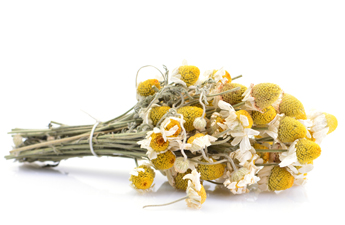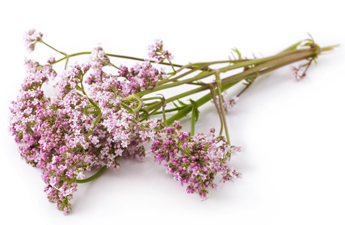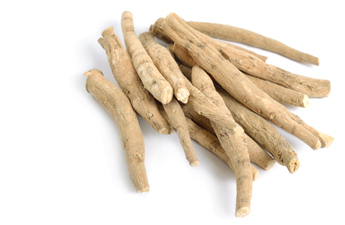By Tamara Welsh, Happy Herbalist
Herbs have a long history of use as medicine for children and adults alike. All cultures relied on botanical medicines to help soothe and heal their children, allowing them to thrive. These days, for obvious ethical reasons, there are very few studies on paediatric herbal therapeutics. For this reason, in choosing herbs for children, we need to consider not only the data from studies on adults, but also take into consideration the time-tested traditional use of herbs for children’s health. Afterall, children are not just small adults; they have different metabolisms, body compositions and intestinal flora that can all impact the way an herb is ingested and its impact around the body.
But don’t let this put you off using herbs on your children! In my clinical experience, children tend to be much more responsive to herbal therapies and therefore the benefits are great! Perhaps this is because of the physiological differences between children and adults or perhaps it’s because children tend to be a bit more open minded! Either way, herbs are generally safe for children and side effects are minimal.
A note on dosing…
When considering giving herbal medicines to children, we need to carefully consider dose. Herbalists use a few different methods in order to calculate the proper dose of herbal medicines for children. These methods often take the age and/or weight of the child into consideration. An easy calculation to remember is:
1.5 x weight in kg + 10= the percentage of the adult dose.
[ 1.5 x weight in lb/2.2) +10] if using pounds
For example a child who weighs 15kg should receive 1.5 * 15 +10 = 32.5% of the adult dose.
For young infants (0-2 years) you can use the following calculation:
(Age in months /150) * adult dose= child’s dose
Tonic and nutritive herbs
Some herbs are particularly high in minerals, vitamins and other beneficial phytochemicals that can sometimes be lacking in a child’s diet. Herbs such a Dandelion leaves (Taraxacum officinale folia), Nettle leaves (Urtica doica folia) and Alfalfa (Medicago sativa) are great additions to the diet as foods added into smoothies, soups and stews. Alternatively, older children might enjoy them as a tea. You can also consider making an infusion and then using the infusion as a base for smoothies and soups or giving younger children cooled herbal infusions in a sippy cup.
Consider also the wonderful tonic herb Withania (Withania somnifera) also known as Ashwaghanda. Withania is generally sold in a powdered form that can be easily added to drinks and foods. It has been shown to have antianemic activity in children (1), allowing them to grow and thrive.
Children love to forage for herbs and this is a tonic in itself. Take them outside into the sunshine to pick fresh Dandelions and get some important Vitamin D. Don’t forget the flowers are edible too! You can also get them involved in sprouting your own seeds of Alfalfa, Broccoli or Radish. Many children are much more likely to try something they’ve been involved in picking, preparing or cooking.
Supporting children’s immunity
Echinacea root (Echinacea angustifolia and/or purpurea) is a wonderful herb to have on hand in the home apothecary. It is the key herb for children’s immune support and has been shown to significantly reduce the need for antibiotics in respiratory tract infections in children (2). Echinacea is considered safe to be given over long periods of time to help support immune system function (3). It is a great for the child who is starting to attend child care and picking up all the bugs!
Fever is a common symptom of childhood illness. When it comes to fever, diaphoretic herbs can be used to help a child to overcome the fever. You may have heard of YEP tea; a tea containing Yarrow (Achillea millefolium), Elder flowers (Sambucus nigra) and Peppermint (Mentha x piperita) for its use in fever management. Ginger (Zingiber officinale) is also a wonderful herb for use in fevers. It is described as a diffusive stimulant (3), sending warmth to the skin and allowing the fever to ‘break’.
A delicious and effective way to support children’s immunity is with an Elderberry (Sambucus nigra) syrup. Not many children will refuse a syrup, compliance is usually high which makes things easier for everyone involved. Elderberry syrup has been well studied in the literature which has sparked interest from pharmaceutical companies. It has been shown to significantly reduce influenza symptoms and the duration of cold and flu (4,5,6).
Improving digestive function
Poor appetite, digestive upset, constipation and diarrhoea are common ailments effecting children from infants to adolescents. Herbal support for digestive complaints can be highly effective while also being gentle and well tolerated. Bitter herbs such as Gentian (Gentiana lutea) and Dandelion root can be used to stimulate digestion in a child with a poor appetite and digestive weakness and to promote bowel motility in constipation. The trick is getting the child to take them due to their bitter flavours. If using a tincture or fluid extract, adding the dose to a small amount of pulpy fruit juice can help. Chamomile (Matricaria recutita) is a mildly bitter herb, fantastic for use in infants and young children struggling with colic and can be given as a cooled tea.
Carminative herbs can also be really helpful for improving digestive comfort. In particular, Fennel seeds (Foeniculum vulgare), Dill (Anethum graveloens), Cinnamon (Cinnamomum cassia) and Peppermint are useful herbs for children with griping and/or diarrhoea. A simple infusion can be made from ½ teaspoon of muddled fennels seeds and given to children to sip on slowly once lukewarm. Consider also Slippery elm powder (Ulmus rubra), a child safe herb that when given with plenty of water, helps to bulk the stool, soothe the mucous membranes and restore healthy intestinal microbes.
Supporting young skin
There are two stand out herbs when it comes to soothing young skin; Calendula (Calendula officinalis) and Chamomile (Matricaria recutita). Both of these herbs are from the Asteraceae or daisy family. Soothing and healing Chamomile and Calendula are wonderful topical applications on eczema, rashes (including nappy rash), scrapes and grazes. A strong infusion can be made of one single or a combination of both herbs and used to wash irritated skin or bathe infected eyes. Dried flowers of each herb can also be added to the child’s bath. Both herbs make wonderful infused oils which can then be added to creams and salves or used just as they are. While rare, allergies to the Asteraceae family do occur so always best to do a small patch test on your child first.
References
- Venkataraghavan S, Seshadri C, Sundaresan TP et al. The comparative effect of milk fortified with Aswagandha, Aswagandha and Punarnava in children – a double blind study. Journal of Research in Ayurveda and Siddha 1980; 1: 370-385
- Ogal M, Johnston SL, Klein P, Schoop R. Echinacea reduces antibiotic usage in children through respiratory tract infection prevention: a randomized, blinded, controlled clinical trial. Eur J Med Res. 2021 Apr 8;26(1):33. doi: 10.1186/s40001-021-00499-6. PMID: 33832544; PMCID: PMC8028575.
- Santich R, Bone K, 2008, Phytotherapy essentials: Healthy children, optimising children’s health with herbs, Phytotherapy Press, Warwick, Queensland, Australia.
- Zakay-Rones, Z., et al., Randomized study of the efficacy and safety of oral elderberry extract in the treatment of influenza A and B virus infections. Journal of International Medical Research, 2004. 32(2): p. 132-40.
- Zakay-Rones, Z., et al., Inhibition of several strains of influenza virus in vitro and reduction of symptoms by an elderberry extract (Sambucus nigra L.) during an outbreak of influenza B panama. Journal of Alternative and Complementary Medicine, 1995. 1(4): p. 361-69.
- Kong, F., Pilot clinical study on a proprietary elderberry extract: Efficacy in addressing influenza symptoms. Online Journal of Pharmacology and Pharmacokinetics, 2009. 5: p. 32-43.




 Nextwave
Nextwave

